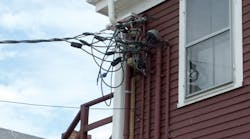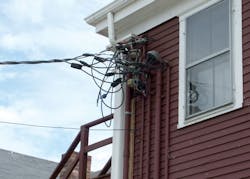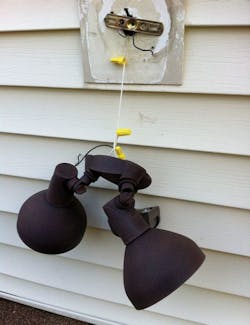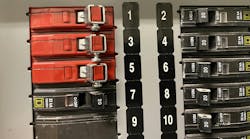How well do you know the Code? Think you can spot violations the original installer either ignored or couldn't identify? Here's your chance to moonlight as an electrical inspector and second-guess someone else's work from the safety of your living room or office. It's your turn to identify the violation.
Hint: Clearance confusion
Unfortunately, there were no winners this month. I did not receive any emails from readers who were able to correctly identify the Code violations in this photo. C’mon guys, this one wasn’t that difficult.
The first violation I would like to point out is the lack of an outlet box for splices or outlet points, as required by Sec. 300.15. These wire connectors were just stuffed behind the luminaire canopy against the siding of the house. Any loose connections or sparks could have easily ignited the siding.
The next problem I want to point out is the equipment ground wire was just poked out of the house and not connected to anything! This lack of bonding and grounding could have created a real shock hazard if any of the exposed metal parts became energized. With the equipment ground not being connected, there would be no “effective ground fault current path” to trip the circuit breaker as required by Sec. 250.4(A)(3). Section 410.44 also requires the luminaire and its equipment to be connected to the equipment ground wire.
Lastly, Sec. 410.30(A) requires luminaires and lampholders to be securely supported. Obviously, this installer did not comply with this requirement.






